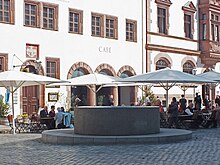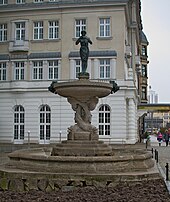
The Archibald Fountain, properly called the J. F. Archibald Memorial Fountain, is located in Hyde Park, in central Sydney. It is named after J. F. Archibald, owner and editor of The Bulletin magazine, who bequeathed funds to have it built. Archibald specified that it must be designed by a French artist, both because of his great love of French culture and to commemorate the association of Australia and France in World War I. He wished Sydney to aspire to Parisian civic design and ornamentation. The artist chosen was François-Léon Sicard, who completed it in Paris in 1926 but never saw the sculpture be placed in Sydney, where it was unveiled on 14 March 1932 by the Lord Mayor of Sydney, Samuel Walder.

A fountain, from the Latin "fons", meaning source or spring, is a decorative reservoir used for discharging water. It is also a structure that jets water into the air for a decorative or dramatic effect.
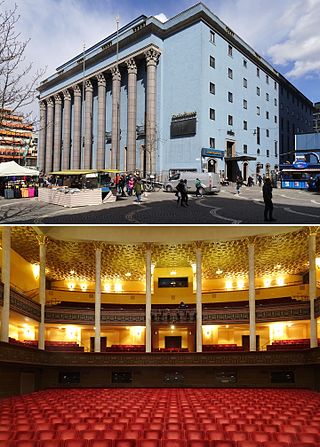
The Stockholm Concert Hall is the main hall for orchestral music in Stockholm, Sweden.
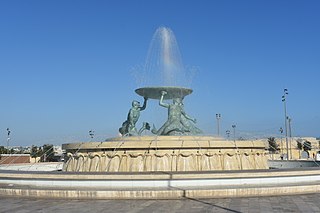
The Tritons’ Fountain is a fountain located in Floriana, Malta. It consists of three bronze Tritons holding up a large basin, balanced on a concentric base built out of concrete and clad in 730 tons of travertine slabs. The fountain is one of Malta's most important Modernist landmarks.
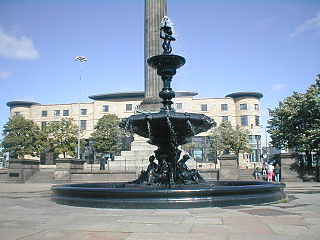
The Steble Fountain stands in William Brown Street, Liverpool, England, to the west of Wellington's Column. It is recorded in the National Heritage List for England as a designated Grade II* listed building. It was donated to the city by a former mayor to fill a vacant plot to the west of the column. For much of the 2010s and 2020s, the fountain has needed repair and has not functioned.

The Gänseliesel is a fountain which was erected in 1901 in front of the medieval town hall of Göttingen, Germany. Although rather small in size, the fountain is the best-known landmark of the city. Today, it is an essential part of graduation celebrations, for every student who finishes a doctorate at the University of Göttingen has to climb the fountain and kiss the statue of the goose girl.

Adolf von Donndorf was a German sculptor.
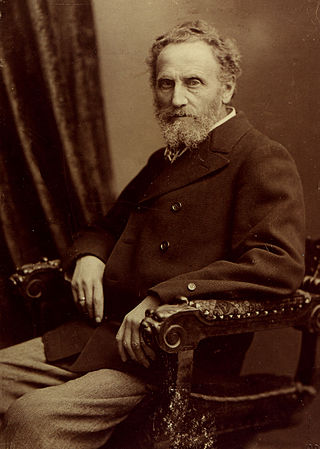
Jacob Ungerer was a German sculptor and Professor of Fine Arts.

The Fountains in Paris originally provided drinking water for city residents, and now are decorative features in the city's squares and parks. Paris has more than two hundred fountains, the oldest dating back to the 16th century. It also has more than one hundred Wallace drinking fountains. Most of the fountains are the property of the municipality.
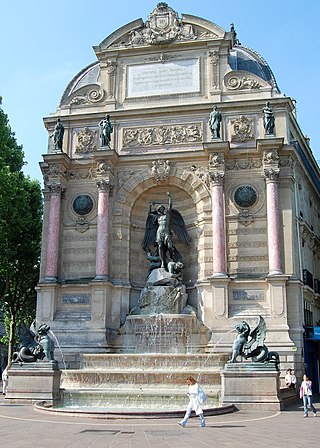
The Fontaine Saint-Michel is a monumental fountain located in Place Saint-Michel in the 6th arrondissement in Paris. It was constructed in 1858–1860 during the French Second Empire by the architect Gabriel Davioud. It has been listed since 1926 as a monument historique by the French Ministry of Culture.
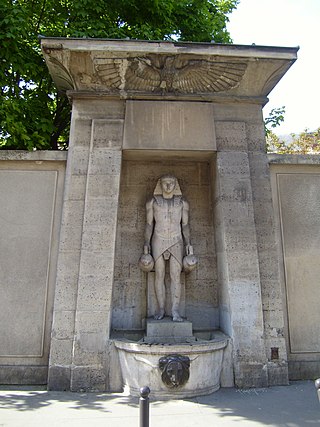
The Fontaine du Fellah, also known as the Egyptian Fountain, located at 52 rue de Sèvres in the 7th arrondissement of Paris, next to the entrance of the Vaneau metro station, was built in 1806 during the rule of Napoleon Bonaparte, in the neo-Egyptian style inspired by Napoleon's Egyptian campaign. It is the work of architect François-Jean Bralle and sculptor Pierre-Nicolas Beauvallet. It has been listed since 1977 as a monument historique by the French Ministry of Culture.

Volkspark Friedrichshain is a large urban park on the border of the Berlin neighborhoods of Friedrichshain and Prenzlauer Berg. The oldest public park in Berlin, at 52 hectares, it is also the fourth-largest, after Tempelhofer Park, Tiergarten, and Jungfernheide.

Matthias Fountain is a monumental fountain group in the western forecourt of Buda Castle, Budapest. Alajos Stróbl’s Neo-Baroque masterpiece is one of the most frequently photographed landmark in the Hungarian capital. It is sometimes called the ’Trevi Fountain of Budapest’.

The Märchenbrunnen is located in the Volkspark Friedrichshain in Berlin. In 1893 the authorities of Berlin issued the artistic entrance to the National Park Friedrichshain. The fountain of fairy tales was commissioned by the National Park and later designed by Ludwig Hoffmann. Hoffmann put forward the idea of a fountain in the park to depict fairy tales. Hoffmann describes this in his memoirs.

Georg Wrba was a German sculptor and graphic artist. He created some 3,000–4,000 works, including as a collaborator of the Zwinger workshop.
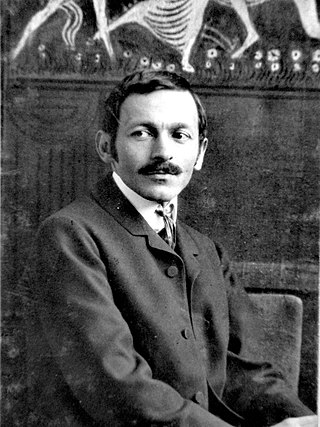
Ignatius Taschner, also known as Ignaz Taschner, was a German sculptor, medalist, graphic designer and illustrator.

The Fischbrunnen is a fountain in the center of Munich, whose history can be traced back to the Middle Ages. In 1954, Josef Henselmann created the fountain in its present form, using parts of Konrad Knoll’s neo-gothic fountain that was destroyed during the Second World War.

The Poets' Fountain was a public fountain with sculptures that was installed on a traffic island in Park Lane, London, in 1875. It was removed in 1948 and it is thought to have been destroyed. One sculpture, an allegorical figure of Fame, is known to have survived and is displayed in the gardens at Renishaw Hall in Derbyshire.

Karl Gustav Rutz was a German sculptor.

The Promenadenring Leipzig is the oldest municipal landscape park in Germany and one of the most important garden and cultural monuments in the city. The term is also used as a synonym for Leipzig's inner city ring road, a traffic facility that is connected to the green spaces of the Promenadenring. Like the inner city ring road, the promenade ring is about 3.6 kilometers long (2.24 mi.).






